Article: Overclocking the Intel® Pentium® D 805 Processor (Dual Core for the Masses)
Many thanks to Intel® for providing the processor.
IV. Overclocking

Overclocking Goal
Before I overclock this processor, I already set a personal goal. Everytime I embark on
overclocking, I make it a point to jot down a realistic goal based on what I have so.
The reasoning is simple, it's always easy to lose track and get frustrated with overclocking
if the expectation is unreasonable. So for nitty gritty, below are the various goals that I
plan to achieve. I consider them neither conservative or agressive and within the boundaries
of the core of the CPU I am testing.
- Rock Stable (Either of the listed):
- Clock Frequency: 3.2GHz
- Front Side Bus: 150Hz (600MHz QPB)
- Suicide Shot (Either of the listed):
- Clock Frequency: 3.4GHz
- Front Side Bus: 170
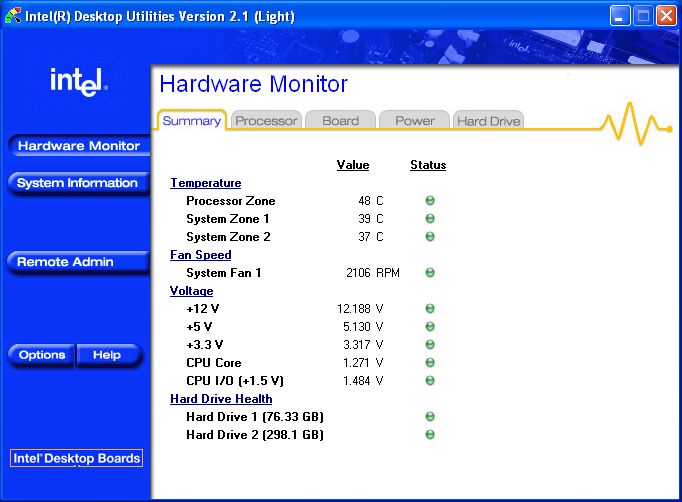
Rock Stable: is the state where the system works normaly without any glitch, passing 8hours of Prime95 with overnight loop of 3DMark01SE and can at least run all the other benchmarks used here once. There are two goals here, either of which is valid. It's to hit 3.2GHz on the clock frequency, this is basing on the Smithfield frequency being sold in the market which is currently at 3.2GHz. The 150MHz on FSB would be to just bump the memory frequency in case the target clock speed isn't reach.
Suicide Shot: is the state where system can not work normally, and is alreay at the brink of crashing, where a slight opening of application can cause the system to full instability. This is important since I will only be using a stock fan, and stock voltage, the tweakers will have an idea of how much MHz the processor can still handle when given a proper cooling and voltage loving adjustment. Some may consider 3.4GHz is quite a bit low for a suicide shot, but since it's dual core, it changes overclocking landscape a whole lot than just dealing with a single core. Chances are, the two cores might require a lot more voltage than what is necessary in the nominal settings.
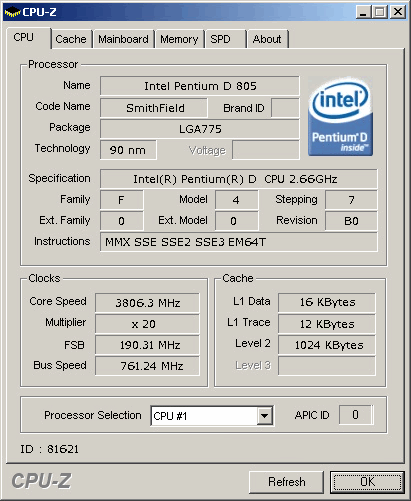
Even if it is a dual core, it still didn't take long to push this processor to its limit because of the superb overlocking stability that the Intel® D975XBX offered. I hit my target Rock Stable frequency very easily so I just couldn't help myself to push it even more. After a few tweaking here and there I manage to hit a 3.4GHz overclock. This overclock is purely on air, on stock voltage without any modification or magical changes on the BIOS except for those already mentioned. In fact, I got so excited that I decided to use my ever trust Thermalright XP-90 with 92mm Delta fan. The CPU-Z speaks for itself already, and I am sure that with a voltage bump, it can reach high. As shown by IDU (Intel® Desktop Utility), the nominal voltage is just at a very low level of 1.27v!!!
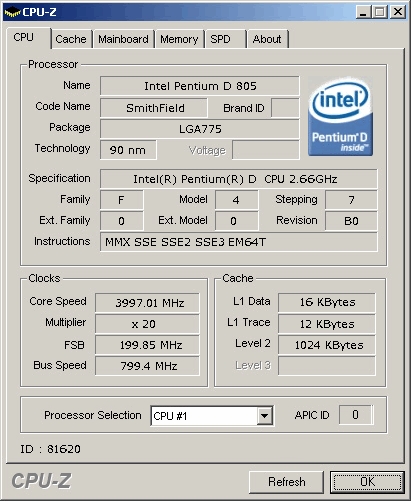
All benchmarks ran without problems on this high overclock. The processor is able to handle this speed for an overnight of benchmark galore, putting the strain of 100% load for over 10hours of torture testing. There was no throttling reported by the monitoring software. Temperature at idle hovers at 38C, while shoots to as high as 49c and the fan is still very silent. Unless there is a plan to use an aftermarket hsf for future CPU upgrade, I highly discourage getting a better fan than the stock fan.
Rock Stable: CPU-Z Validation
Suicide Shot: CPU-Z Validation
Intel® Pentium® D 805 2.66GHz/133MHz@3.8GHz/190MHz
PCMark02
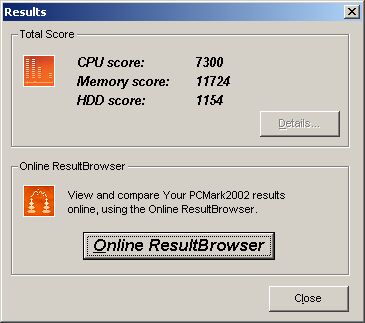
PCMark04
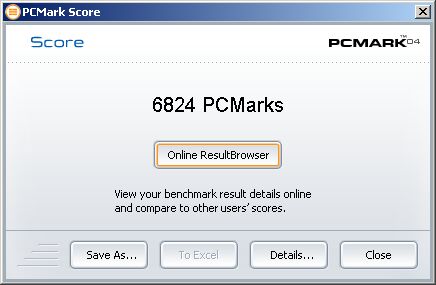
PCMark05
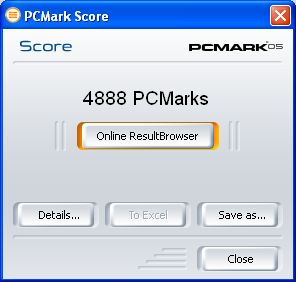
Sandra-CPU
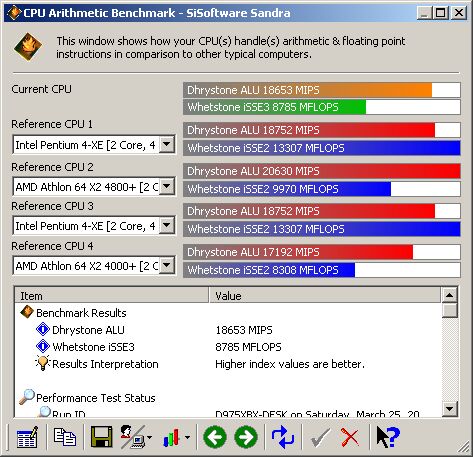
Sandra-Multimedia
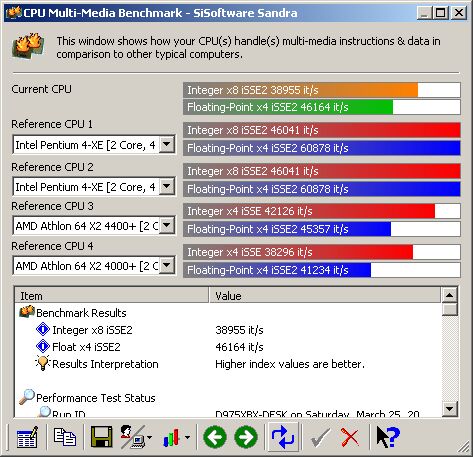
Sandra-RAM Bandwidth
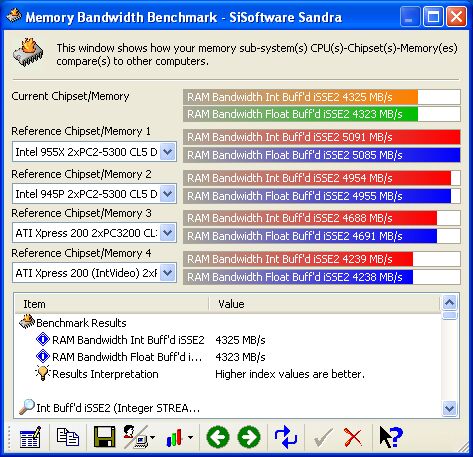
::3D Test::
3DMark01SE
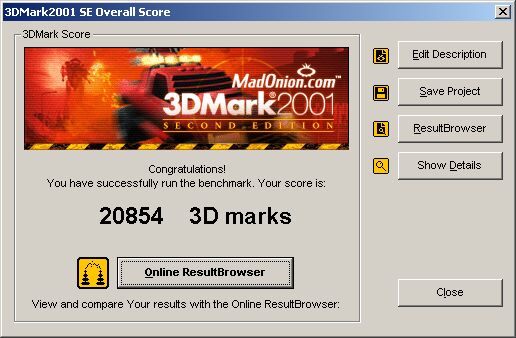
3DMark03
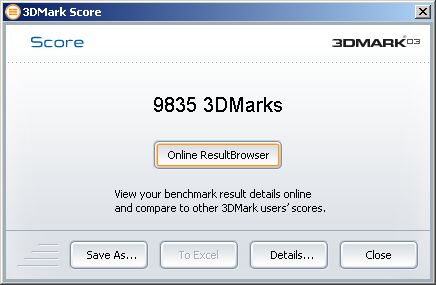
3DMark05
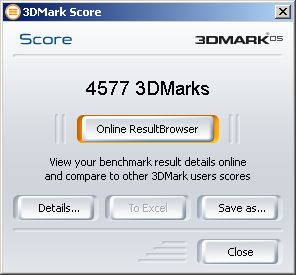
Anyone who has run PCMark04 knows its tough break the 5k barrier, but this processor already broke it without problems. Now comes the overclocking score, and lo and behold, 6k is broken like its a just toothpick. PCMark05 has improved as well and all other benchmark including Sandra has shown a definite huge. This is truly a Leap Ahead™ performance coming from Chipzilla who fuse and rathed this processor at very low speed but with which can really go a lot higher. This makes one think more about Chipzilla's fusing policy since this processor can definitely go higher, it only ensures that the rated speed will not degrade so easily if used overtime. The high ceiling and margin of performance can not be discounted.
In gaming, 3DMark01 shows results similar to the increase in performance shown by PCMark02. However, 3DMark03 and 3DMark05 didn't increase much since this is mostly GPU driven but still score increase is already noticeable.


